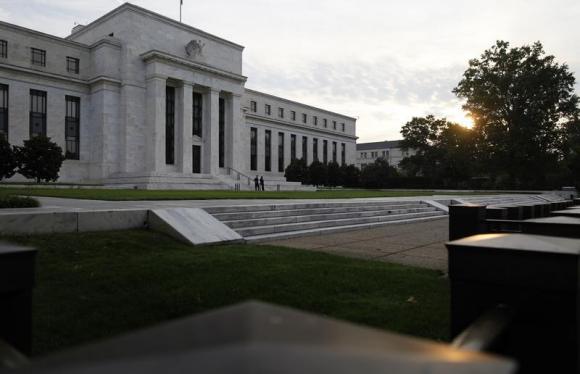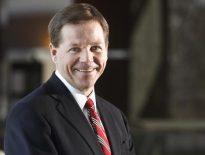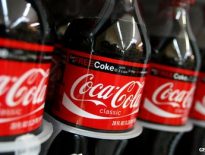(Reuters) – A debate is growing louder within the Federal Reserve over whether it should stand ready to raise interest rates to prick any risky asset bubbles that its regulatory toolsmight fail to address.

The 2007-2009 financial crisis left many wondering whether the U.S. central bank should have more boldly tightened policy in the preceding years to head off the explosion of risky mortgage debt on Wall Street.
Now, after holding interest rates near zero for more than five years and pumping trillions of dollars into the economy through bond purchases, the question of how best to deal with bubble-like signs could become a defining one for the Fed and its new chief, Janet Yellen.
If the economy continues to grow but inflation stays stubbornly low, concerns over financial instability could prompt Yellen to more quickly wind down the policy stimulus than she otherwise might.
In interviews and speeches, top Fed officials are staking out arguments on whether the purview of monetary policy, which is traditionally harnessed to stabilize inflation and achieve full employment, should effectively be expanded to include financial-market risk.
The worry is that the many new rules adopted after the financial crisis won’t be enough on their own to halt the kind of risk-taking that could again imperil the world’s largest economy. Already, rates on high-yield debt are near their lowest level in years, and leveraged loans are roaring.
While Yellen and most other Fed policymakers think raising rates should be a last-ditch option to deal with such problems, others, such as Fed Governor Jeremy Stein, are more open to the idea. Stein effectively sparked the debate a year ago when he said monetary policy gets in all of the cracks that financial regulations might not.
I’m sympathetic to Governor Stein’s argument that it might be pretty hard to get a regulatory response that is timed and targeted appropriately, James Bullard, president of the St. Louis Federal Reserve Bank, told reporters last week.
Therefore, it’s possible you might have to use an interest rate tool, he said, adding: It is a blunt tool; you’d only want to do that in circumstances that made a lot of sense.
While the Fed is bound by the 2010 Dodd-Frank financial reform law to defend against risks to the financial system as a whole, it has generally interpreted that to mean directly supervising banks and other financial institutions, and writing tougher rules on things like capital standards.
Its historical mandate is two-fold: to ensure maximum sustainable employment and low and stable inflation.
Improvements in the labor market and growing confidence that a downward drift that took inflation far below the Fed’s 2 percent target would soon be arrested prompted policymakers to start trimming their bond-buying stimulus earlier this year.
The central bank expects to keep winding down the asset purchases and halt the program later this year, when its balance sheet will have swollen to some $4.6 trillion. Next year, it will probably start to slowly raise interest rates from near zero, where they have been since late 2008.
But if U.S. economic growth reaches 3 percent this year and quickens further next year, as the Fed predicts, investors will be more willing to make risky bets. If at the same time inflation remains below target and unemployment above target, Fed policymakers could face a conundrum: at what point does the risk of financial instability outweigh the desire to boost the economy a bit more?
FROTHY DEBATE
Already there are signs the monetary accommodation has had unintended consequences.
Alongside ultra-loose polices at the Bank of Japan and other central banks, the Fed has helped keep borrowing costs low across the spectrum of world financial markets, encouraging investors to make riskier bets to turn a profit.
The rate on high-yield U.S. corporate debt is running at 6.97 percent this quarter, near its lowest level since at least 2006, according to Thomson Reuters data tracking yield at issuance.
In another sign of risk-taking, over the same time frame the proceeds from U.S. leveraged loans spiked to their highest level in the second quarter of last year, at $364.8 billion. It was $312.9 billion in the fourth quarter of 2013.
Dallas Fed President Richard Fisher, a former hedge fund manager who is now among the central bankers most worried about the risks posed by easy money policies, pointed to high-yield corporate debt as in the red, in a presentation earlier this month.
Meanwhile, U.S. stocks are near record highs with investors bidding up prices in the hope of future earnings, especially for smaller companies. On the small-cap Russell 2000 index .TOY, the forward price-to-earnings ratio is 20 percent higher now than it was a year ago.
SEA CHANGE IN FED THINKING
At a policy-setting meeting on January 28-29, top Fed officials argued that accommodative monetary policies could lead investors to take on excessive risk and so undermine longer-term financial stability, according to minutes of the meeting released on Wednesday.
Several policymakers floated the idea of explicitly tying the decision on raising rates to perceived risks to financial stability, among other factors.
To be sure, cash has been pouring into riskier assets for a few years and few economists think there are now asset bubbles that should prompt tighter Fed policy. After all, the central bank is keeping credit loose to encourage investments that will prompt hiring and economic growth.
But even Yellen has acknowledged that persistently low rates can incent the development of bubbles.
We can’t take monetary policy off the table as a tool used to address it, she told Congress last week.
That marks a sea change of sorts in the thinking at the central bank since the financial crisis.
Ten years ago, then Fed Chairman Alan Greenspan took the first of 17 identical and modest steps to tighten very easy Fed policy in the face of an economy being propelled by house prices and stock markets that were growing hotter.
Disinclined to stifle the recovery from the mild 2001 recession, Greenspan nudged rates higher by the smallest of possible increments at each policy meeting, a pattern his successor, Ben Bernanke, inherited and continued until mid-2006.
But by then, with rates only moderately tight at 5.25 percent, the seeds of the devastating subprime mortgage crisis were sown, and the deepest recession in decades soon followed.
Many of the financial regulations adopted in response will take years to implement and regulators think some areas of finance, such as mutual funds and tri-party repurchase markets, remain vulnerable.
For now the Fed prefers to rely on regulations to tackle financial stability, said Peter Hooper, a former Fed official who is chief U.S. economist at Deutsche Bank Securities.
But financial stability is no doubt partly at play in the desire to end the Fed’s asset purchases, he said, adding that the Fed’s promise of low rates for a while to come can also encourage investors to reach for yield.
(This version of the story was refiled to add Greenspan’s first name.)
(Reporting by Jonathan Spicer; Editing by Tim Ahmann and Ross Colvin)





